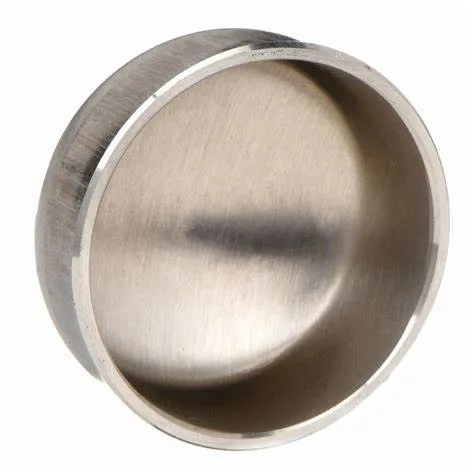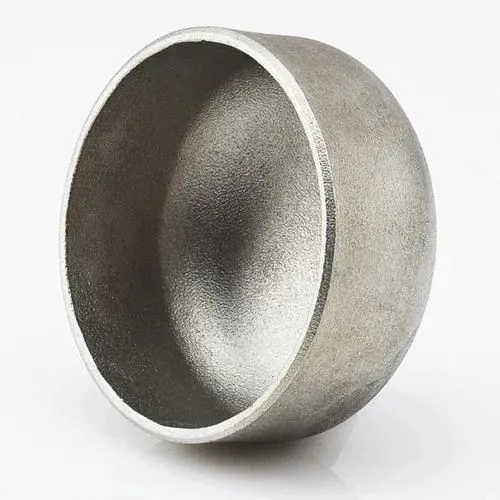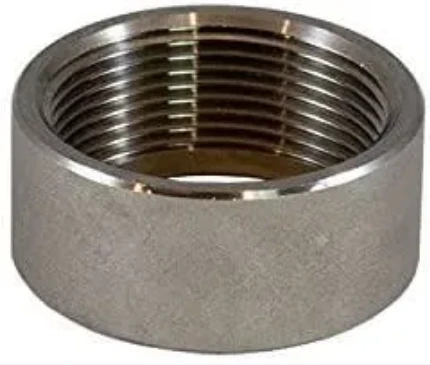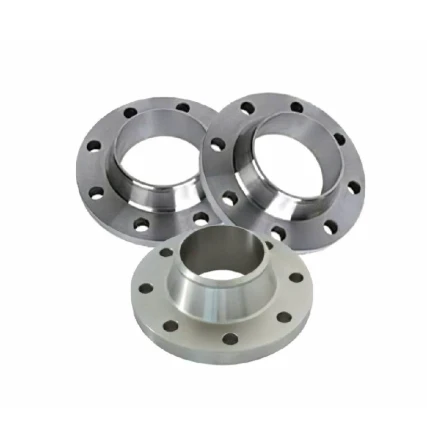Mae JIS B2311 yn Safon Ddiwydiannol Japaneaidd sy'n cwmpasu ffitiadau pibell weldio casgen, gan gynnwys capiau a ddefnyddir mewn systemau pibellau. Mae capiau weldio casgen yn gwasanaethu pwrpas cau diwedd pibell, gan ddarparu sêl i atal gollyngiadau neu halogiad. Dyma gyflwyniad i gapiau weldio casgen JIS B2311:
- 1. JIS B2311 Standard:
- - Mae safon JIS B2311 yn nodi'r gofynion ar gyfer dylunio, dimensiynau, deunyddiau, gweithgynhyrchu a phrofi ffitiadau weldio casgen, gan gynnwys capiau, mewn systemau pibellau.
- - Mae'r safon yn sicrhau bod capiau a gynhyrchir yn unol â safonau JIS yn bodloni safonau ansawdd ac yn gydnaws â chydrannau pibellau eraill.
- 2. Cap Butt-Welding:
- - Mae cap weldio casgen, yn ôl JIS B2311, yn ffitiad sydd wedi'i gynllunio i orchuddio a selio diwedd pibell yn ddiogel, gan gynnig amddiffyniad a chynnal cywirdeb y system pibellau.
- - Defnyddir capiau mewn sefyllfaoedd lle mae angen cau pen y bibell, naill ai'n barhaol neu dros dro, i atal gollyngiadau, halogiad, neu i roi gorffeniad i'r system.
- 3. Deunydd ac Adeiladu:
- - Mae capiau weldio casgen o dan fanylebau JIS B2311 ar gael mewn amrywiol ddeunyddiau megis dur carbon, dur di-staen, a dur aloi i fodloni gwahanol ofynion cymhwyso.
- - Mae'r capiau hyn yn cael eu cynhyrchu gan ddefnyddio dulliau adeiladu safonol i sicrhau cysylltiad cryf a di-ollwng wrth weldio i ddiwedd pibell.
- 4. Cais a Buddion:
- - Mae capiau weldio casgen yn dod o hyd i gymwysiadau mewn amrywiol ddiwydiannau, gan gynnwys olew a nwy, prosesau cemegol, gweithfeydd trin dŵr, a mwy lle mae angen capio terfyniadau pibellau yn ddiogel.
- - Mae capiau'n amddiffyn pennau pibellau rhag elfennau amgylcheddol, yn atal halogiad, ac yn helpu i gynnal glendid a chywirdeb y system bibellau.
- 5. Gosod a Weldio:
- - Mae arferion gosod priodol, gan gynnwys aliniad cywir, paratoi pen y bibell, a thechnegau weldio, yn hanfodol wrth osod capiau weldio casgen i sicrhau sêl dynn sy'n atal gollyngiadau.
- - Mae weldio yn ddull cyffredin ar gyfer cysylltu capiau â phibellau, gan ddarparu cau diogel a pharhaol a all wrthsefyll pwysau, amrywiadau tymheredd, a llif hylif o fewn y system.
- I grynhoi, mae capiau weldio casgen JIS B2311 yn gydrannau hanfodol a ddefnyddir mewn systemau pibellau i selio a diogelu diwedd pibellau yn ddiogel. Mae'r capiau hyn yn cydymffurfio â gofynion safonol i sicrhau ansawdd, dibynadwyedd a chydnawsedd o fewn cymwysiadau diwydiannol lle mae angen cau ac amddiffyn pibellau.
What Is a Butt Welding Cap and How Is It Used in Industrial Piping?
In industrial piping systems, end-of-line sealing and branch closures require robust solutions. A butt welding cap serves as a critical component for terminating pipes securely. By providing a seamless, welded closure, this fitting maintains system integrity, prevents leaks, and supports compliance with industry standards.
What Is a Butt Welding Cap?
A butt welding cap—also called a pipe end cap or buttweld end cap—is a round fitting designed to close off the end of a pipe. It’s manufactured to match the pipe’s outer diameter and schedule, with either a hemispherical or flat face. To install, both the pipe end and cap are beveled to form a V‑groove, enabling full‑penetration, fusion welds. Common materials include carbon steel, stainless steel, nickel alloys, and other engineered grades, chosen to satisfy pressure, temperature, and corrosion‑resistance requirements.
How Is Butt Welding Cap Used in Industrial Piping?
Butt welding caps find application across oil & gas, petrochemical, power generation, water treatment, and general process industries for both permanent and temporary closures. During hydrostatic testing, technicians install caps to seal off sections of piping while monitoring for leaks. In new construction or retrofit projects, caps terminate branch lines, future tie‑in spools, or dead‑end mains until system expansion. Welders prepare each joint by cleaning and beveling surfaces, aligning the cap precisely, and executing a root pass followed by filler passes per the qualified Welding Procedure Specification (WPS). Post‑weld heat treatment and non‑destructive examination (NDE)—such as radiography or ultrasonic testing—verify weld integrity and compliance with ASME B16.9 and related standards. Additionally, temporary caps enable safe isolation during maintenance, allowing for segment testing and dewatering under regulatory protocols.
Benefits and Best Practices
Butt welding caps offer a smooth‑bore transition that minimizes flow disruption and stress concentration. Their full‑penetration welds deliver exceptional structural strength and leak resistance. To optimize performance, engineers should:
Select caps with matching material grades and wall thicknesses
Adhere to proper bevel angles and joint fit‑up tolerances
Follow qualified WPS protocols rigorously
Consider cladding or protective coatings in corrosive environments to extend service life
Regular inspection and thorough documentation ensure long‑term reliability and safe operation under demanding conditions.
Butt welding caps are indispensable components for achieving durable, leak‑proof pipe terminations in a wide range of industrial applications.
Butt Welding Cap FAQs
What is a butt welding cap?
|
What materials are commonly used?
|
What standards govern butt welding caps?
|
How are butt welding caps installed?
|
Where are butt welding caps typically used?
|
What are the advantages of threaded caps?
|
















